Dentro del Cero (Inside the Zero)
What happens in advance of the image: on finding the form of things unknown alongside Beatriz Santiago Muñoz and Monique Wittig
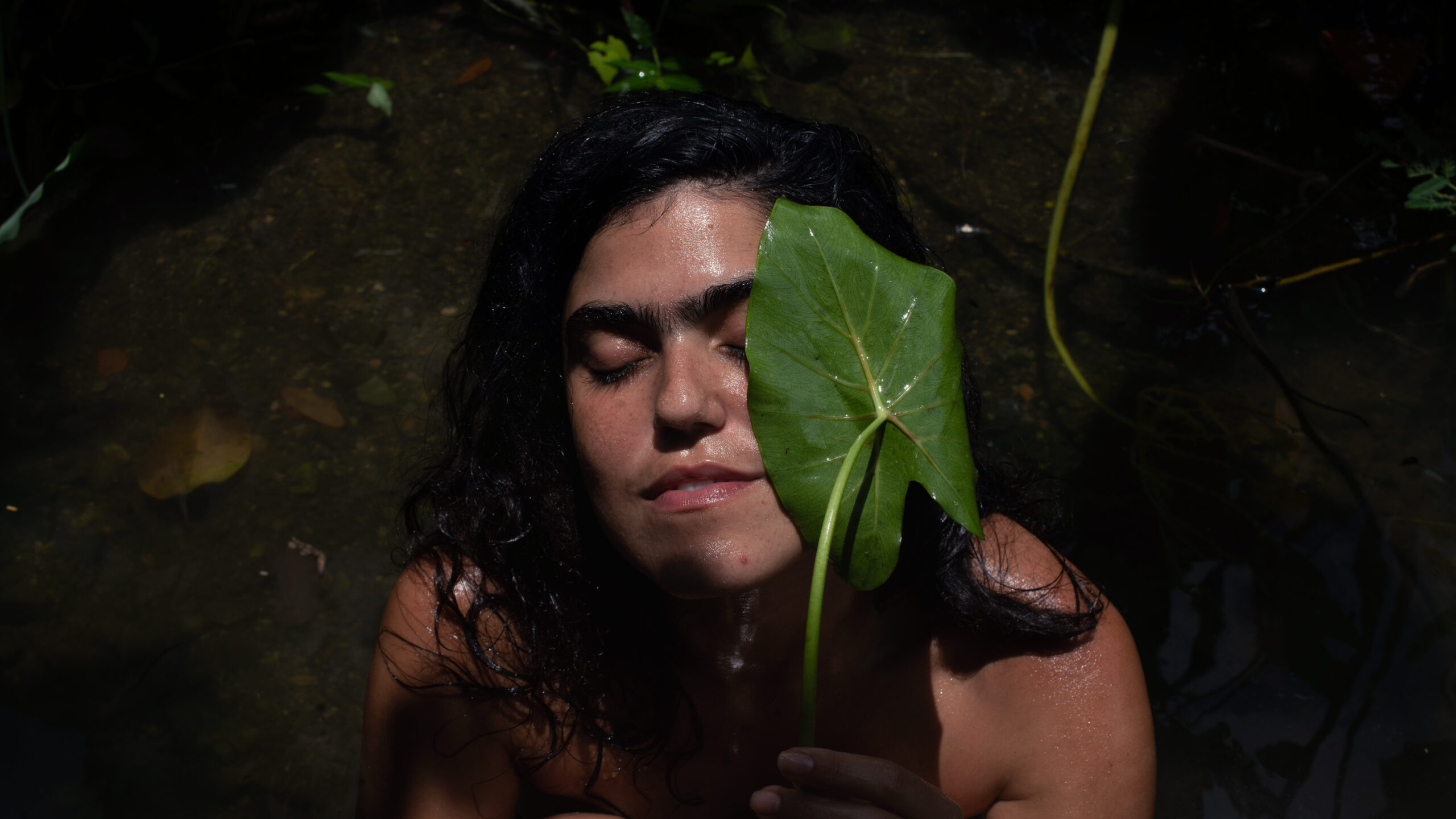
Several months ago, the writer Bhanu Kapil wrote to me via email posing the question: What is the zero of your writing? It was Spring. I felt kind of radiant and in advance of myself, charmed and alive. I had just quit my job to embark on this inchoate set of ideas—“the form of things unknown”—so I could return to this other space, what I have since began to refer to as the time of the novel. Something was coalescing during that period that was not The Novel, but instead a writing that describes the poesis of the novel, and what it’s like to relate to writing through the conceit of fiction.
Around that same time, I remember telling someone that things seemed to be getting “very meta.” I had recently entered psychoanalysis; within that space, I began to reckon with a sense of doubt that many of the cultural narratives I had inherited, and the social structures I was a part of, could occasion the kinds of radical transformations I desired in myself, and others: the way we relate to the idea of a self (a fiction), or an Other. How do you teach people to make room for what is unknown, in themselves and in the Other, and what is perceived as Other? I wondered about this, alongside my own desire for narrative and a writing that invited ceremony, ritual—not writing as daily practice—but writing avant la lettre, as an invitation to a sacred time, “an exceptional time and space in which attention and perception are transformed.”1 I wanted to theorize the time of the eclipse, the time of the novel. A when that invites the dissolution of a certain intellectual, individual, and affective membrane and coincides with “the time appointed to begin the work.”2
This was also the Spring when I began to notice how the fresh cut flowers in my studio wouldn’t die, and that on more than one occasion, when I was rung up at the grocery store, the total, rather than ending in a fraction, ended as a .00. In the wake of these relatively strange, but ultimately banal sorts of events I returned to Bhanu’s question: What is the zero of your writing?
I was drawn into the contradiction of the zero, that such a figure can suggest that which is elusive and manifold, so I took pleasure in free-associating: Maybe the zero is a terminus, best represented by the image of a clock counting down in anticipation of a detonation or revelation…3, 2, 1, 00.01…or perhaps the zero is the point where forces balance, as if on a scale. Then I imagined a thermometer. Zero degrees Celsius. The freezing point. The interval of the phase change. Then I imagined the zero was a place, a destination, not like a street, but a sensation, an origin—not the punctum “which pricks me”—it was more nebulous, like the zero was a zone, and a zone within a zone, but it is hard to say what lies inside it even as I am approaching it now—00:00.
It was during that Spring marked by a slow blooming psychosis that I attended a screening of Beatriz Santiago Muñoz’s feature-length film Oriana (2022). I remember emerging from the theater noticeably flushed and ungodly hot. I knew that the film was a reimagining of Monique Wittig’s novel Les Guérillères (1969), and while I had read the text in English many years ago, nothing ever really prepares you to see something you’ve never seen before. After the screening, I recognized the film had undone something in me, inaugurated a new time, a sacred time. I felt it was urgent I get home and write, but on my way out, I heard someone announce what sounded like my name. I knew I was a little fucked up, or a lot, because I did not exactly recognize my own name to hear it from someone else’s mouth.
“Lara!”
I turned around.

In my writing, the zero is the moment when something flips, as in the fiction coincides with the Real. It is the eclipse: a moment of convergence, alignment, brightness, shadow. To invoke the zero and other similar archetypal images is to engage with the elemental, cosmic force of creation. Such images call us back to a time of sacred paradox that goes beyond identity and before self. If, as Trinh T. Minh-ha has suggested, “To use an image is to enter fiction,”3 what kinds of future fictions might emerge from inside the zero?
This question interests me because I am a writer who uses images—I traffic in them, and attempt to translate the seeing into something that resembles poetry, though it could just as easily be called fiction, or more enigmatically, writing. I house some ambivalence around these terms even as I deploy them flippantly, casually, and on occasion punitively, knowing that they don’t really describe how I inhabit my practice. At the same time, I also struggle to convey to others how I do what I do, and I know I am not alone in this. “What do we call everything that happens before an image appears? What discipline is this?”4 I share a desire to formalize the shadow, that which happens in advance of the image, the sentence, and that which happens inside it, inside writing, inside the time of the novel.
After I returned home from the screening, I went to the studio to write, but not about the film. I set out to finish some other text, a poem, as I recognized in my disorientation some other time had arrived (a time before language, before English, even…). “You say there are no words to describe this time, you say it does not exist. But remember. Make an effort to remember. Or, failing that, invent.”5 …What is the now of this writing? As I type this in “darkroom” mode on my laptop, the letters appear red on black. The artist Na Mira observes: “Red is the first color to disappear from sight, and that’s why the darkroom and the cinema are red, and infrared is invisible.”6 What takes place in Oriana and the mechanism through which it happens is a little infrared. To watch the film is to invite a new kind of perception, sub-seeing, sensing what is beneath, beyond, and below sight. Expanded cinema. “Experimental ethnography” featuring “a plural protagonist.”7 This is the cinema I want to see in the world and this is the kind of fiction I want to write, the kind that creates a space to call forth other selves.

Beatriz Santiago Muñoz, Oriana, 2022. Image courtesy the artist. 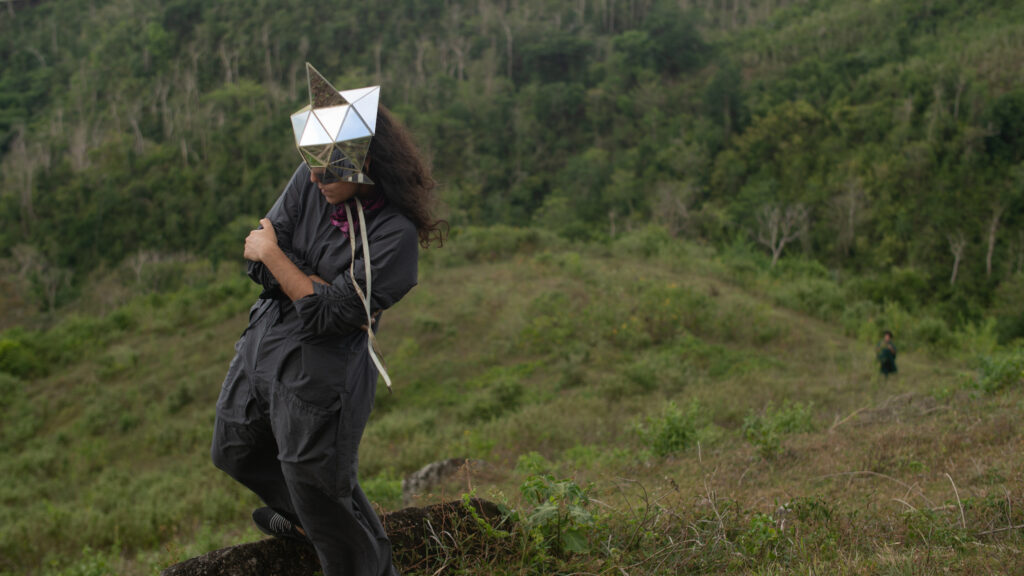
Beatriz Santiago Muñoz, Oriana, 2022. Image courtesy the artist. 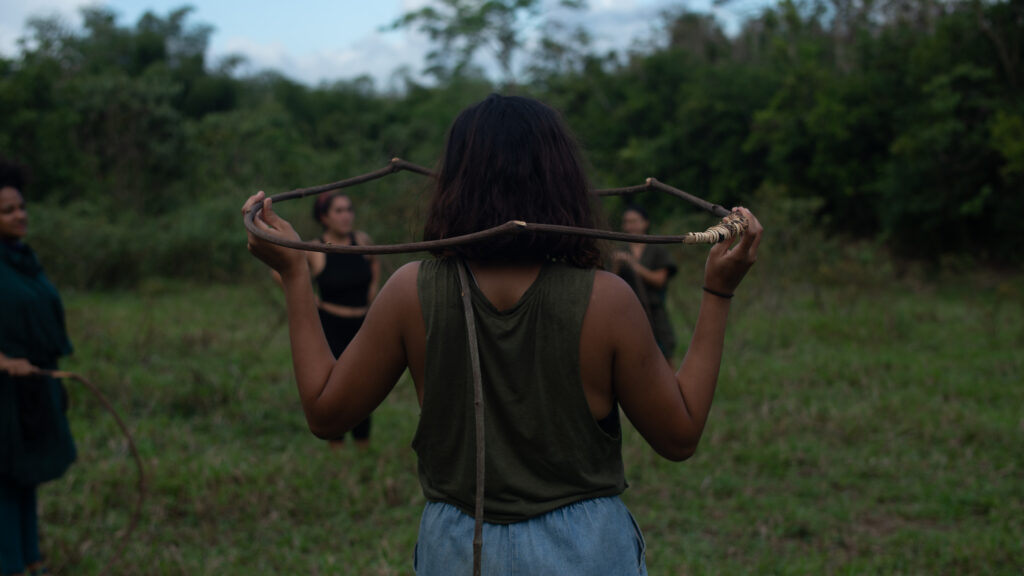
Beatriz Santiago Muñoz, Oriana, 2022. Image courtesy the artist. 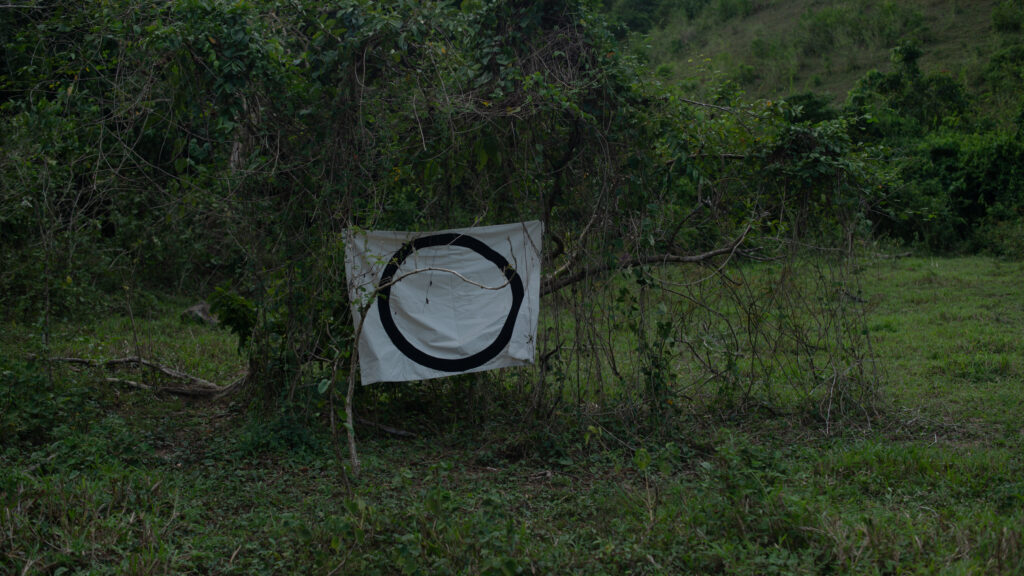
Beatriz Santiago Muñoz, Oriana, 2022. Image courtesy the artist.
Santiago Muñoz relates that “as in the novel, [Oriana] is drawn to the interval.”8 To court the interval is to work in the realm of ritual: the zero. In the novel, such gestures are explored typographically, but in the film, the possibilities are realized more fully; rather than being concerned exclusively with representation, or realism, Santiago Muñoz and her collaborators take matters a step further, transforming type into surround, “a modular space where universes meet again.”9
Rereading Les Guérillères, I noted the experience was different in light of having encountered the text through Santiago Muñoz’s translation. I’m referring to Oriana as a translation, rather than an adaption, as is more commonplace when discussing film, because of the way Santiago Muñoz has theorized “translation [a]s… an exercise that creates a space of reflection between the two texts, of what is possible to think between two languages and ways of naming and seeing the world.”10 Oriana is an experiment in translating the time of the novel into the time of the film within the surreal plane of a speculative post-Maria Puerto Rico. These ideas which imagine the creative possibilities of translation are foregrounded prominently in Santiago Muñoz’s experimental short El cuervo, la fosa y la yegua (2021), particularly in the segments that feature Haitian playwright Guy Régis Junior as he describes his translation of Marcel Proust’s seven-volume novel À la recherche du temps perdu from French into Kréole. What Régis conveys via his disinterest in rewriting Proust through a “linear translation” provides a kind of lens through which to view Oriana.
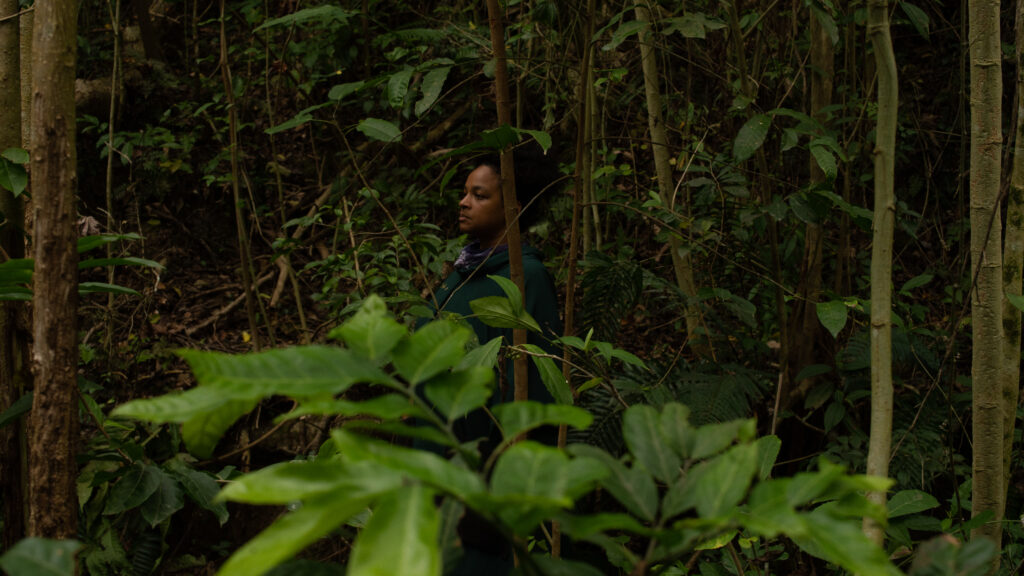
It’s worth briefly appreciating that the experimental and future-facing aspects of Wittig’s novel do not render it an obvious or easily translatable project; Les Guérillères is a notoriously oblique and difficult narrative that invites the reader to inhabit the time wherein “some of the women swim letting themselves drift toward the last splashes of sunlight on the sea.”11 It’s a text that privileges atmosphere over self, and in the sense that it embraces the fictive point of view of les guérillères as a plural force, in the absence of narrative, dialogue, character development, the novel’s drama exists in its miasmatic surround—“THE VIOLET FLAT GRASSLANDS.”12 Despite the canonical place of Les Guérillères in French feminist literature of its era, it is this liminal, persona-less, placelessness of the text which tends to distance many readers. It’s the sort of novel where nothing happens, or, to put it differently, the scale of what happens, how it happens, lends itself to another order—what Santiago Muñoz describes as “a filmic space,” an infrasensory space.13 In film, as in fiction, the experience of narrative emerges in part as an effect of sequence. One image after another, one sentence after the next. But if, as Santiago Muñoz claims, “Filmic narrative is built upon many of the conventions of the novel,”14 then in the movies, as in the novel, anything is possible. A filmic translation of a dystopian speculative work of fiction like Les Guérillères appears as the ideal vessel to explore what Trinh T. Minh-ha describes as “new possibilities if we don’t try to fill them with the pre-known and the familiar.”15
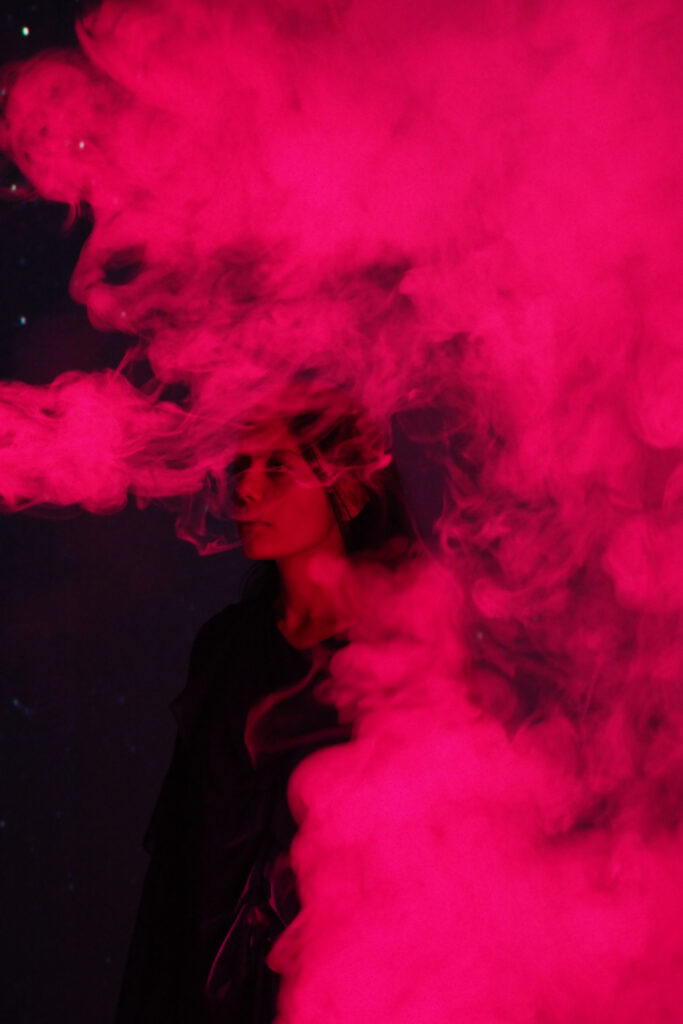
Beatriz Santiago Muñoz, Oriana, 2022. Image courtesy the artist. 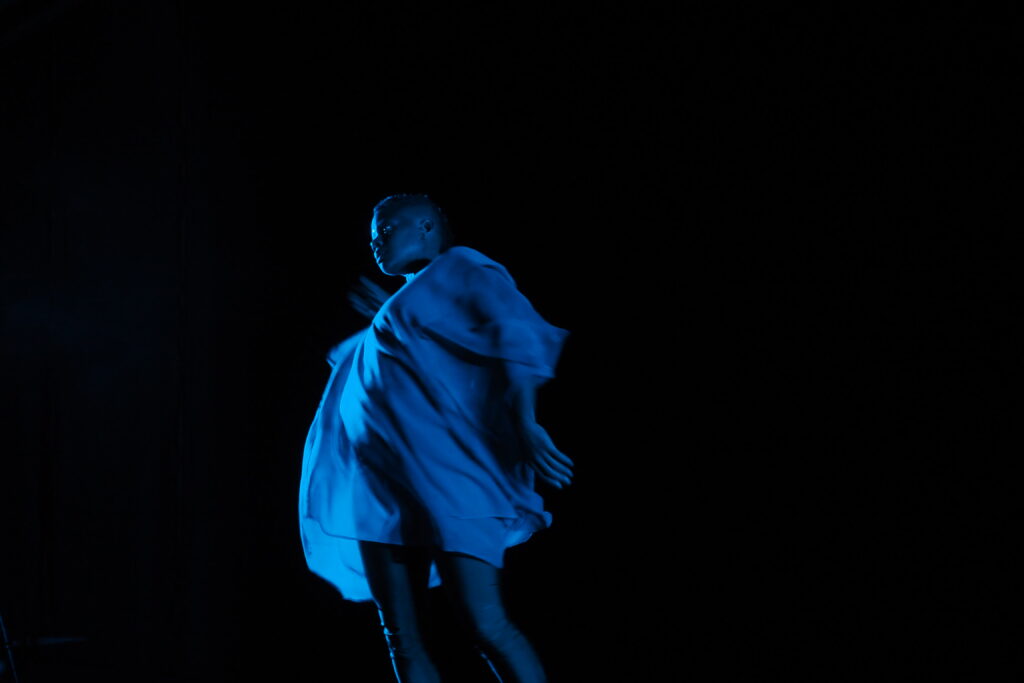
Beatriz Santiago Muñoz, Oriana, 2022. Image courtesy the artist. 
Beatriz Santiago Muñoz, Oriana, 2022. Image courtesy the artist. 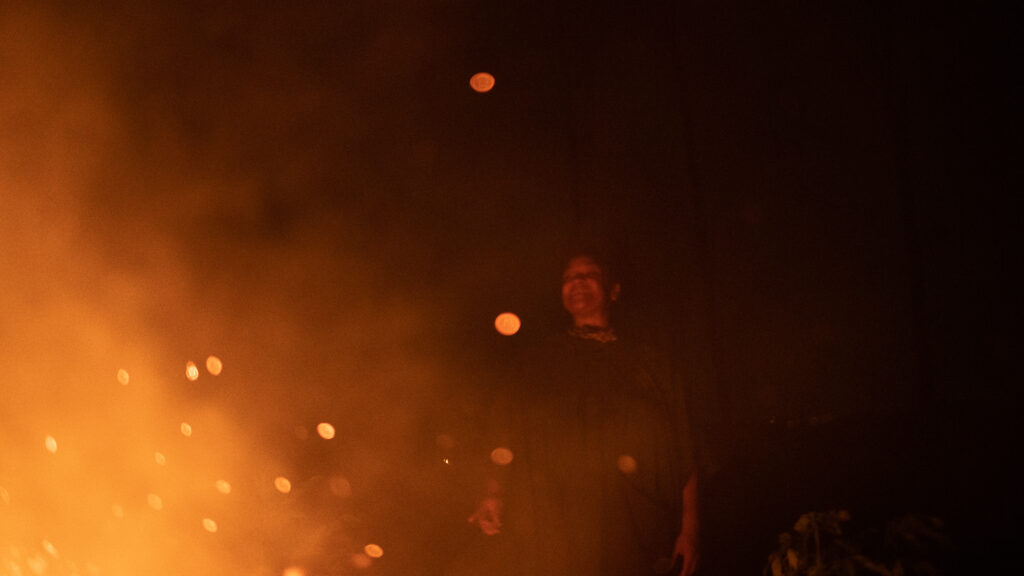
Beatriz Santiago Muñoz, Oriana, 2022. Image courtesy the artist.
Oriana, like its predecessor text, establishes its mood through a series of asynchronous tonal shifts, drone, smoke, ceremony, ellipses, and alchemy. The experience is trippy, but it’s also not entirely without narrative or a sense of climax, even as the conflict isn’t exactly between characters because there aren’t any individual characters to speak of. As Santiago Muñoz observed in the Q&A following the screening, Oriana aspires in its technical and cinematic strategies of representation to work like the novel by “thwarting identification” and privileging the experiences of those in the film (the subjects) over those in the audience (the spectators). After rereading Wittig’s novel, I began to see anew how certain sentences and scenes that exist in the book could, through Santiago Muñoz’s experimental ethnographic practice, find new form in Oriana. Something of the “original” text, the mythic and apocalyptic style of the writing, seems simultaneously speculative and abstract enough to lend itself to a filmic translation and future-oriented interpretation. Like Marguerite Duras, who wrote the screenplay for Hiroshima Mon Amour (1959) and used writing as an occasion to encounter the image by entering fiction, I imagine that for Santiago Muñoz, the task of translating Wittig’s novel into film—the fiction into image—is part of the work, the travay.
Somewhat more difficult to perceive in the single-screen iteration of the work are the multiple collaborative and cross-disciplinary happenings and marginal practices staged across various sites that also precede and constitute the work (the collaborations with the Brazilian ensemble Rakta, for instance, that form the film’s sonic architecture). That ongoingness alongside the hybrid temporalities woven into Santiago Muñoz’s site-specific and relational mode of practice, seems to inform the prismatic experience of Oriana. By activating “the entire sensorium,”16 and disrupting the boundaries between subject/spectator through the invocation of art, installation, performance, and ritual, Oriana brings to life some of the noumena and speculative practices and poetics demanded by Les Guérillères: “MARGINS SPACES INTERVALS / WITHOUT PAUSE,”17 “the sound of micturition,”18 and the otherworldly movements and choreographies of les guérillères as “they move over the smooth shining surface. Their movements are translation, gliding…ensheathed in something black and glittering.”19
In an era where cinephiles are eager to disparage the recent cultural compulsion known as “the remake,” Oriana emerges as a novel experiment. As a cross-genre translation that images “the working through of desire,”20 it is a little difficult for me to move out from under its spell and beyond the place of fascination. My own situatedness as a spectator who is interested in working through matters of form, time, ritual, and pleasure is not lost on me, but even to describe it in this somewhat vague and circular way is to abstract something that is perhaps too personal to explore within the now of this writing. What I can say, uninhibitedly: Les Guérillères is so far from the kind of novel I would ever choose to write, whereas Oriana is the kind of film I have been waiting to see my whole life. I would like to believe that in writing about it here I have started to emerge from another kind of trance as I reorient myself to a new sense of time, form, narrative, desire.
Beatriz Santiago Muñoz’s film Oriana screened at the Walker Art Center in March 2023. >> more information